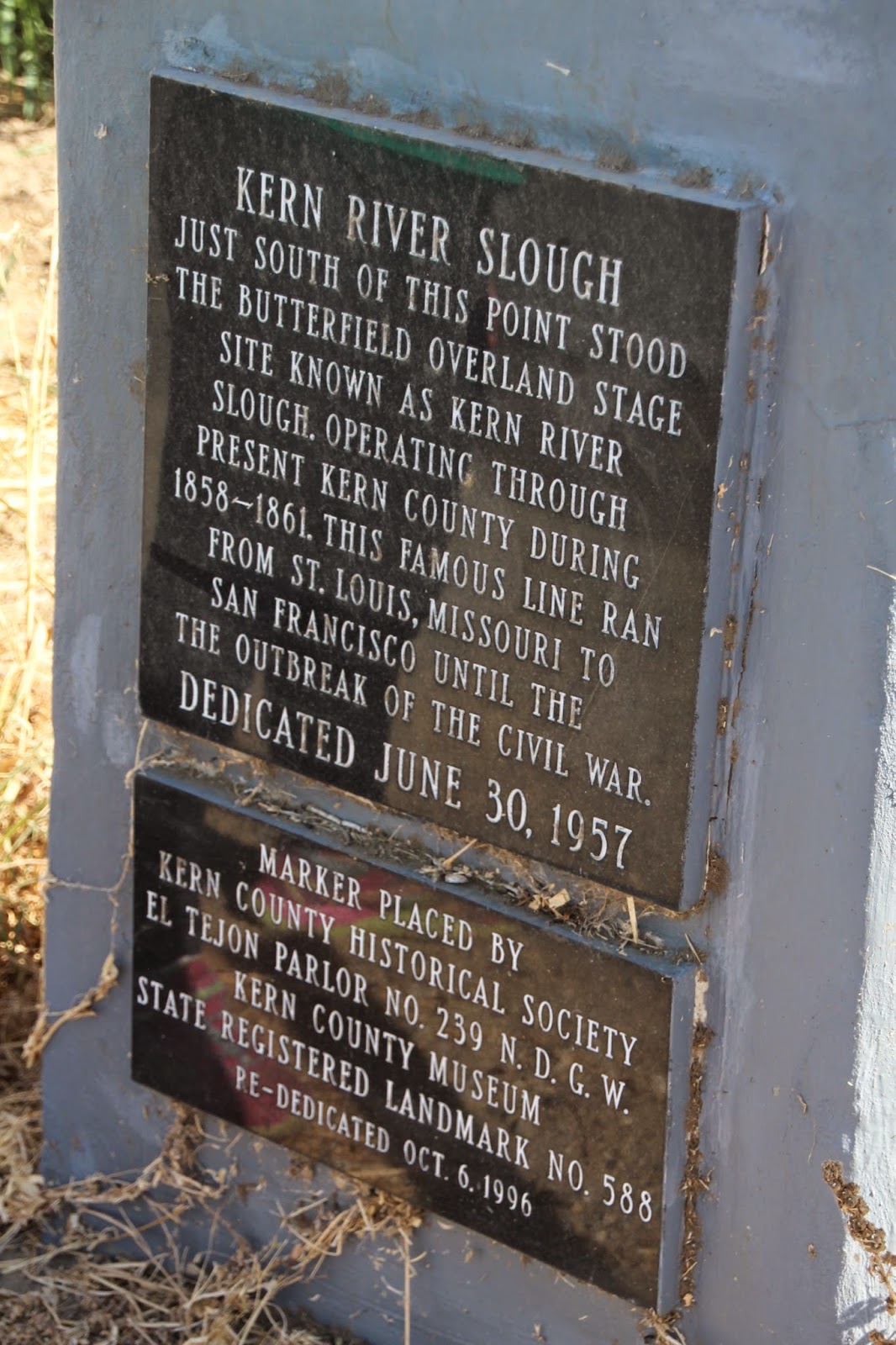The Colonel settled in Los Angeles when his illustrious military career was over. He got the idea to found an all-black settlement where he and his fellows could live freely and away from prejudice.
In 1908 he founded Allensworth about thirty miles north of Bakersfield. It was the first and only town in California that was financed, founded and governed by African-Americans.
The town valued education-- as you can see the large school-house above was one of the first structures they erected.
The coolest thing about this site is that you can tour it on your own, using your cell phone to hear information about the different buildings on the property.
Col. Allensworth and his wife spent some time here, but they remained primarily in Los Angeles where he continued to recruit people to come and live in Allensworth.
Their home, below, is furnished with some of the families artifacts.
It was fun to look inside the windows of the buildings to see how they would have looked in the early 1900's.
It would be great fun to visit again when they do one of their special events-- you can see the schedule of events here.
Sadly, the colony of Allensworth ceased to exist in the late 1960's when it was found that there was arsenic in the water supply.
Next we went to the Kern-County Museum for a free museum day.
This is an amazing place to walk through and spend some time, but there is not historic landmark here.
Kern County has moved many old buildings here...
and put them in one place...
to give people a sense of what it was like to live in rural Kern County.
Since oil is king in this county there was a great deal of information about oil drilling...
and a special exhibit on it inside a large building.
When we had explored for a bit, we moved on to more sites...
On the side of the road in the middle of oil country we came upon Gordon's Ferry (CHL 137).
This site was for an overhead cable ferry operated during the 1950's over the Kern River.
Our next site was behind a fenced area-- so we had to zoom in for Discovery Well of the Kern River Oilfield (CHL 290).
From the state: Oil was discovered at 70 feet in 1899, when Tom Means persuaded Roe Elwood and Frank Wiseman, aided by Jonathan, Bert, Jed, and Ken Elwood, George Wiseman, and John Marlowe, to dig here for oil. On June 1, 1899, 400 feet to the north, Horace and Milton McWhorter drilled this region's first commercial well.
A short drive away we came to the Place where Francisco Garces Crossed the Kern River (CHL 278).
In 1776 Garces crossed the Kern River (which he called Rio de San Felipe) about a mile north of this plaque. Garces' influence is celebrated all over this area-- as evidenced by his huge statue in Bakersfield (see our last Kern County post.)
Sadly there is only a plinth for CHL 660-- Point on the Jedediah Smith Trail. The plaque would have read: About February 1, 1827, Jedediah Strong Smith, first American to reach Mexican California overland, passed near this spot with his party of fur trappers. From San Gabriel Mission, the group was en route north to a land reported teeming with 'plenty of Beaver.' Smith and his men were trailblazers whose exploits soon led to the American conquest of California.
Smith was a colorful character who was the first American to travel up the Western Coast from Mexican California to Oregon. He and his friend Robert Stuart discovered and charted the South Pass, which became the most traveled route from CA to OR in the early days.
Next we went to a church campus to find the Outermost Point in the South San Joaquin Valley (Visited by Padre Garces in 1776) CHL 371.
The plaque reads: Padre Garcés, first recorded non-Indian to visit this locality, came in April of 1776, seeking a new route from Mexico to California. His epic journey covered more than two thousand miles of uncharted wilderness, opening trails that later became highways and railroads.
Our final site for the day was the Kern River Slough Station (CHL 588).
This was another stop along the Butterfield Overland Stage route which operated from 1858-1861.













































0 comments:
Post a Comment